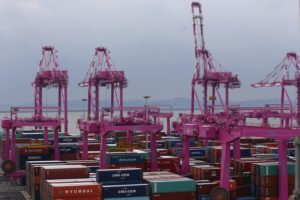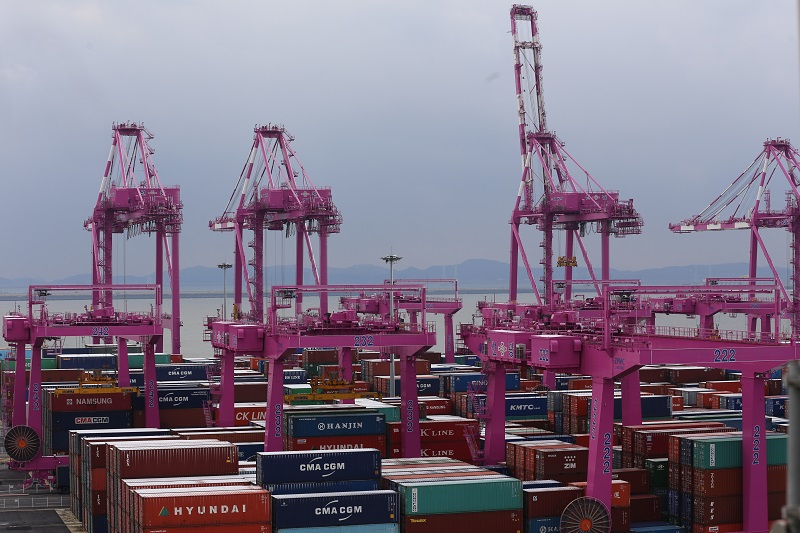 South Korea’s Incheon New Port, which is located close to the Seoul Metropolitan area, marked its first year of operation with overall improvements in trade volume, service lines, and the environment for logistics in the surrounding area, according to Incheon Port Authority (IPA).
South Korea’s Incheon New Port, which is located close to the Seoul Metropolitan area, marked its first year of operation with overall improvements in trade volume, service lines, and the environment for logistics in the surrounding area, according to Incheon Port Authority (IPA).
Incheon New Port opened June 1, 2015 when terminal operator Sun-kwang New Port Container Terminal (SNCT) opened the first 410 meters of its 800-meter length of quay. On March 18 this year, Hanjin Incheon Container Terminal (HJIT) opened the second container terminal that features a 420-meter pier.
Incheon New Port, which took nine years to build, was constructed in a bid to tap into the growing intra-Asia trade and accommodate the trend for larger vessels. The port also targets new sea routes bound for North America and Europe.
In celebrating the port’s first year of operation, IPA said the terminal has been making significant strides in terms of volume.
“While major ports in South Korea and the world’s top 10 ports saw declines in trade volume by posting -0.3 percent and -0.6 percent, respectively, Incheon port posted 8.6 percent increase,” IPA said.
Items coming into Incheon port have become diversified, it added. Since the end of last year, the government started to use Incheon port for shipment of stockpiled commodities. The list of items also has grown to include American fresh fruit and meat. In particular, the import of fresh foods and refrigerated items is expected to increase further when IPA completes construction of the LNG-based cold storage cluster in the area neighboring Incheon New Port in 2018.
In addition, service lines continue to be expanded. Nine new container service routes were added and the service networks have become more robust within a year, as Incheon New Port drove a competition between the two terminals to improve services. Three new routes were opened only at Incheon New Port, including the nonstop route connecting Atlanta, Los Angeles, and the port, a route operated by the CC1 fleet of G6 Alliance.
The logistics environment has also become more conducive as IPA has forged cooperation with the quarantine and customs clearance organizations to enable a 24-hour quarantine service and a swift importing and exporting process, as well as to allow bonded warehouses for small amount of freight to be established near the terminal. These enhanced services save time and cut cost for carriers and shippers, said IPA.
Looking forward, the agency said SNCT’s remaining 390-meter stretch of quay will be opened on January 1, 2017, while HJIT will open its second quay stretching 380 meters in November of that year. Meantime, IPA plans to continuously support the box terminal to attract more sea routes in preparation for its full operation.
Yoo Chang-keun, president of IPA, said the port benefits from its good location, explaining it can “provide a direct route connecting North America and Europe to the huge market of the Seoul metropolitan area,” helping carriers and shippers reduce costs on transportation.





